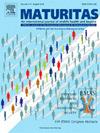Birth cohort differences in multimorbidity over time among Chinese oldest-old adults
IF 3.6
2区 医学
Q2 GERIATRICS & GERONTOLOGY
引用次数: 0
Abstract
Background
Multimorbidity imposes a significant burden on healthcare systems worldwide. Understanding longitudinal changes multimorbidity among the oldest-old (i.e., those aged 80 or more) is essential yet remains limited. This study investigated birth cohort differences in multimorbidity over time among Chinese oldest-old adults using two longitudinal surveys in different decades.
Methods
Data were drawn from the Chinese Longitudinal Healthy Longevity and Happy Family Study. 2703 and 2533 participants aged 80 or more were included in the 1998 and 2008 surveys, both with a one-decade follow-up, respectively. The multimorbidity count was assessed as the number of conditions an individual had from a list of 12 common chronic conditions. Generalized linear mixed models were employed to assess birth cohort differences, adjusting for demographic, lifestyle, and socioeconomic factors. Inverse probability weighting was applied to mitigate attrition bias.
Results
The 1998 survey (mean age: 89.32 ± 6.87 years, 51.17 % female) revealed no significant birth cohort differences in multimorbidity (P > 0.05). In contrast, the 2008 survey (mean age: 91.12 ± 7.13 years, 59.97 % female) demonstrated that each successive birth cohort experienced a higher multimorbidity count than its predecessors (P < 0.05). Compared to the cohort born in 1924–1928, participants from the cohort born in 1909–1913 had an estimated 0.217 fewer multimorbidity count (95 % CI: −0.397, −0.037), whereas those from the cohort born in 1919–1923 exhibited a reduction of 0.094 (95 % CI: −0.185, −0.002). Additionally, the multimorbidity count was significantly higher among smokers, alcohol consumers, and those with a lower intake of fresh fruit.
Conclusion
Multimorbidity is progressively increasing among recent birth cohorts among Chinese oldest-old adults. These findings highlight the urgent need for comprehensive policies and early interventions to promote healthy ageing.

中国老年人多发病的出生队列差异
多病给世界各地的卫生保健系统带来了沉重的负担。了解老年人(即80岁或以上)的纵向变化和多病是必要的,但仍然有限。本研究采用两项不同年代的纵向调查,调查了中国老年人多病的出生队列差异。方法数据来自中国健康长寿与幸福家庭纵向研究,1998年和2008年的调查中分别有2703名和2533名80岁及以上的参与者,分别进行了10年的随访。多病数是根据个人患有12种常见慢性病的数量来评估的。采用广义线性混合模型评估出生队列差异,调整人口统计学、生活方式和社会经济因素。采用逆概率加权来减轻损耗偏差。结果1998年的调查(平均年龄:89.32±6.87岁,女性51.17%)显示,多病的出生队列差异无统计学意义(P >;0.05)。相比之下,2008年的调查(平均年龄:91.12±7.13岁,59.97%为女性)表明,每个连续出生队列的多病发生率都高于其前一组(P <;0.05)。与1924-1928年出生的队列相比,1909-1913年出生的队列参与者的多病计数估计减少0.217 (95% CI: - 0.397, - 0.037),而1919-1923年出生的队列参与者的多病计数减少0.094 (95% CI: - 0.185, - 0.002)。此外,在吸烟者、饮酒者和新鲜水果摄入量较低的人群中,多重发病率明显更高。结论中国老年新生儿多病发生率呈上升趋势。这些发现突出表明,迫切需要采取综合政策和早期干预措施,促进健康老龄化。
本文章由计算机程序翻译,如有差异,请以英文原文为准。
求助全文
约1分钟内获得全文
求助全文
来源期刊

Maturitas
医学-妇产科学
CiteScore
9.10
自引率
2.00%
发文量
142
审稿时长
40 days
期刊介绍:
Maturitas is an international multidisciplinary peer reviewed scientific journal of midlife health and beyond publishing original research, reviews, consensus statements and guidelines, and mini-reviews. The journal provides a forum for all aspects of postreproductive health in both genders ranging from basic science to health and social care.
Topic areas include:• Aging• Alternative and Complementary medicines• Arthritis and Bone Health• Cancer• Cardiovascular Health• Cognitive and Physical Functioning• Epidemiology, health and social care• Gynecology/ Reproductive Endocrinology• Nutrition/ Obesity Diabetes/ Metabolic Syndrome• Menopause, Ovarian Aging• Mental Health• Pharmacology• Sexuality• Quality of Life
 求助内容:
求助内容: 应助结果提醒方式:
应助结果提醒方式:


